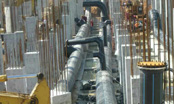
PPR pipes and fittings have become increasingly popular in the plumbing industry due to their numerous advantages. PPR, short for Polypropylene Random Copolymer, is a type of plastic that is widely used for hot and cold water supply systems.
One of the main advantages of PPR pipes and fittings is their high resistance to corrosion and chemical substances. Unlike traditional metal pipes, PPR pipes are not prone to rusting or scaling, ensuring a longer lifespan and lower maintenance costs. Additionally, PPR pipes have excellent thermal insulation properties, which help to conserve energy and reduce heat loss.

Another benefit of using PPR pipes and fittings is their ease of installation. PPR pipes are lightweight and flexible, making them easy to transport and maneuver. They can be quickly and easily connected using heat fusion welding, eliminating the need for complex and time-consuming threading or soldering.
Furthermore, PPR pipes offer excellent hygiene and safety. These pipes are non-toxic and do not release harmful substances into the water supply. They also have a smooth interior surface, which prevents the buildup of bacteria and ensures a clean and safe water supply.

In terms of cost-effectiveness, PPR pipes and fittings prove to be a wise investment. Although the initial cost may be slightly higher than traditional materials, the long-term benefits far outweigh the initial investment. The durability and low maintenance requirements of PPR pipes result in significant savings over time.
In conclusion, the application of PPR pipes and fittings is a smart choice for any plumbing project. Their resistance to corrosion, easy installation, hygienic properties, and cost-effectiveness make them an ideal option for both residential and commercial applications. Consider using PPR pipes and fittings for your next plumbing project and experience the extensive benefits they offer.

-
Address:
No.188 Yaoxin Road , Fengxian District, Shanghai, China
- Tel: +86-21-57405080
- E-mail: sales@rehomepipe.com
- whatsapp: +86 13817660031

 English
English  Español
Español 

